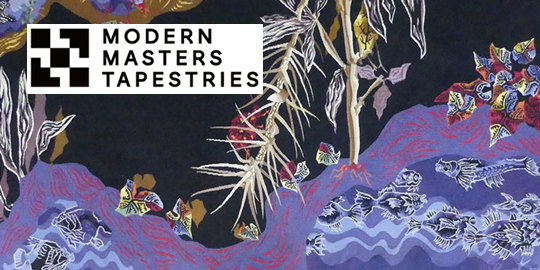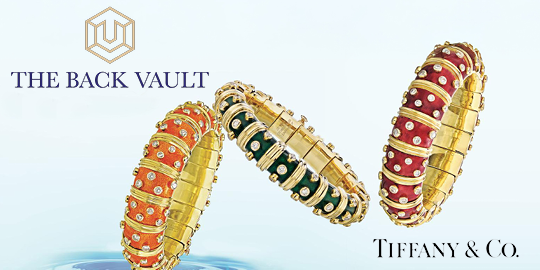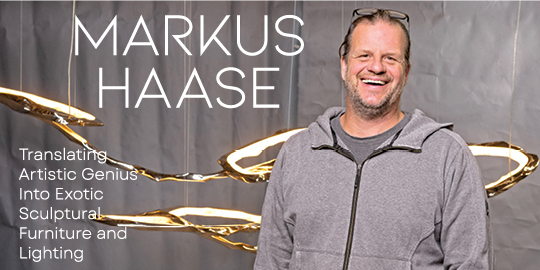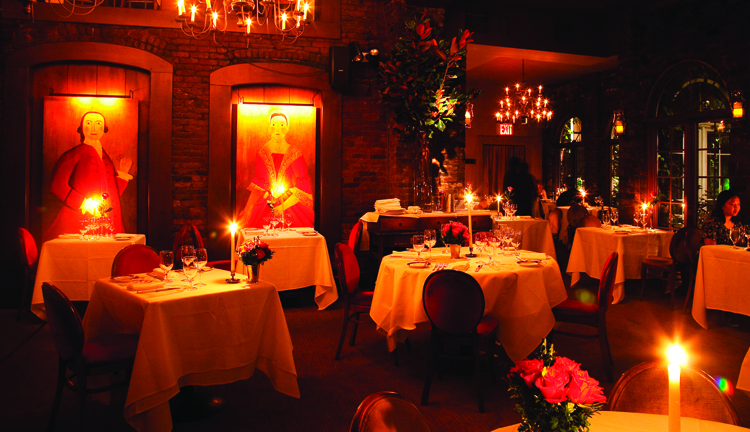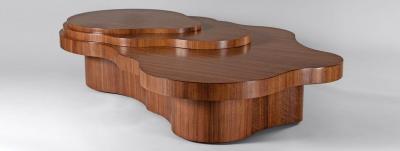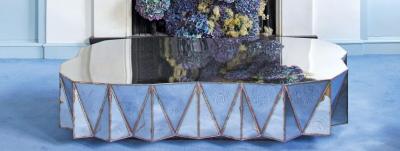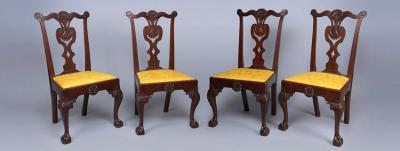Historic Dining in Manhattan
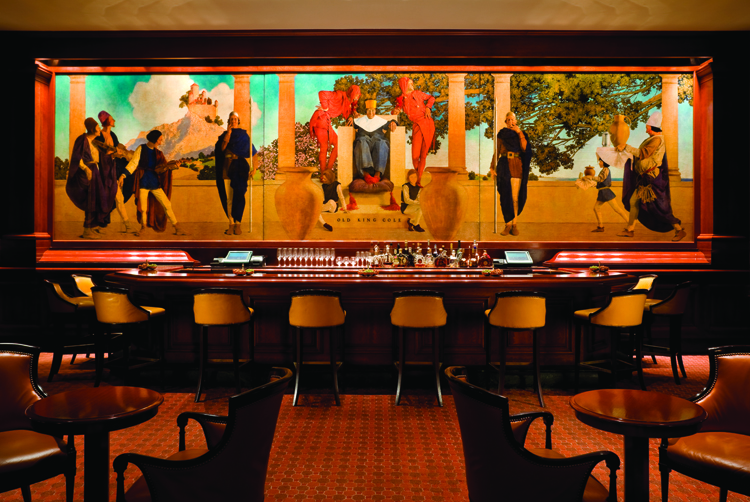
- Fig. 1: Old King Cole, a 30 x 8-foot mural painted by Maxfield Parrish (1870–1966), was originally commissioned by John Jacob Astor for The Knickerbocker. After its closing and the mural’s installation in several other locations, the mural took its place behind the elongated carved oak bar of the King Cole Bar at the St. Regis in 1932. In 2013 it was part of a $90 million renovation, having been restored in 2007. Image courtesy of The St. Regis Hotel, New York, Two East 55th Street, at Fifth Avenue.
When it comes to dining, Manhattan has it all. In deciding where to eat, certainly the food, ambiance, and convenience play a role, but some of Manhattan’s restaurants have something that sets them apart: historic appeal.
The Palm Restaurant and the Monkey Bar in Midtown, Leopard at des Artiste on the Upper West Side, and Sardi’s in Midtown West, are known for their historic wall murals. The King Cole Bar, at the one-hundred-and-ten-year-old St. Regis Hotel in Midtown, is named for its 1906 mural (Fig. 1) painted by Maxfield Parrish (1870–1966). Just south of the Park Avenue Armory, in the Regency Bar & Grill, flagship restaurant of the Loews Regency Hotel (slated to reopen January 15 after a complete renovation), is where the famed “Power Breakfast” originated in 1975, and where you’ll see New York’s politicians and its most powerful professionals.
To experience one of the finest examples of the International Style of architecture, dine at the Philip Johnson-designed Pool Room in Midtown’s Four Seasons Hotel. With equally arresting architecture, Midtown’s Grand Central Station, described as one of the world’s loveliest train stations, offers lots of dining opportunities in its Dining Concourse. Grand Central Oyster Bar, located within the station and opened the same year (1913), provides a spectacular location as well as great seafood. The eighty-seven-year-old Russian Tea Room, also in Midtown, was once a gathering place for members of the Russian Royal Ballet and still retains its air of imperial splendor. Keep an ear open: the legendary landmarked art deco Rainbow Room in Rockefeller Center is slated to reopen early 2014.
NYC’s many museums do not neglect their patrons when it comes to food. Among the best are: Robert, with its terrific views of the city, atop the Museum of Art & Design (Columbus Circle); The Modern at MoMA and Untitled at the Whitney. Visitors to the American Folk Art Museum (Lincoln Center area) can select from surrounding restaurants, including Boulud Sud, where Chef Daniel Boulud offers Mediterranean-inspired dishes and an excellent $60 prix fixe three-course menu every evening.
A number of historic restaurants offer a romantic atmosphere. Among them are the landmark One if By Land, Two If By Sea (Greenwich Village) (Fig. 2), an ambiance-filled converted carriage house built in 1767; owners have included Aaron Burr and John Jacob Astor. Barbetta (midtown west), which dates to 1906 and remains within the founding family, is decorated with antiques evoking an eighteenth-century Italian palazzo. Both Le Perigord (midtown east) and La Grenouille (midtown), have offered classic French delicacies for nearly half a century.
Some of the city’s oldest restaurants are located in Lower Manhattan. Delmonico’s, which has existed in various forms since 1837, is famous for its Lobster Newburg and chicken fricassee with foie gras and truffles. Fraunces’ Tavern, established in 1762 and where General George Washington bid farewell to his officers at the victorious end of the American Revolution, offers upscale pub fare; be sure to visit the adjoining museum before or after dining. Bridge Café, which opened in 1794, perhaps justifiably calls itself “the oldest serving tavern in New York.” It’s worth a visit for its many inspired seafood dishes. In Greenwich Village, Minetta Tavern has been operating since 1937. Ever popular with writers and artists, it serves old New York classics like oxtail and lamb saddle.
Midtown has its share of historic restaurants too, among them, Keens Steakhouse, established in 1885 and known for its mutton chops, a favorite of prolific food author Arthur Schwartz. 2nd Ave Deli, in true NYC style, is no longer located where its name suggests. Nowadays it has two locations: one in Midtown East and one on the Upper East Side (near Sotheby’s). They offer “the finest Jewish culinary creations in New York City.” Also on the Upper East Side is Lexington Candy Shop. In business since 1925, this classic luncheonette is a must for their old-time New York fountain drink—the egg cream soda—and breakfast served all day.
With so much on offer it’s hard to keep any list of personal favorites short. Among mine are: Great NY Noodletown (Chinatown)—because its food is well prepared and it’s open nearly twenty-four hours a day; Katz’s Delicatessen (Lower East Side) is known for its pastrami, pickles, and vintage signage; the Italian bistro La Rivista (theatre district) is where acclaimed cabaret singer/pianist Chris Barrett frequently entertains the diners. Favorite French bistros include: Quatorze Bis (Upper East Side), L’Express and Pigalle (Midtown), and La Mirabelle (Upper West Side).
Some of these restaurants are participating in Restaurant Week, when special menus with prix fixe lunches and dinners offer diners plenty of variety. To see the soon-to-be released dates and view the complete list of restaurants once the timing is announced, visit: www.nycgo.com, or stop by NYC & Co., 810 Seventh Avenue (52-53 Sts), New York City.
Steve Trombetti is a member of the Society of American Travel Writers and former Vice President/Communications for the NY Convention & Visitors Bureau. He served on the steering committee which established New York Restaurant Week, together with Zagat Guides founder, Tim Zagat.







